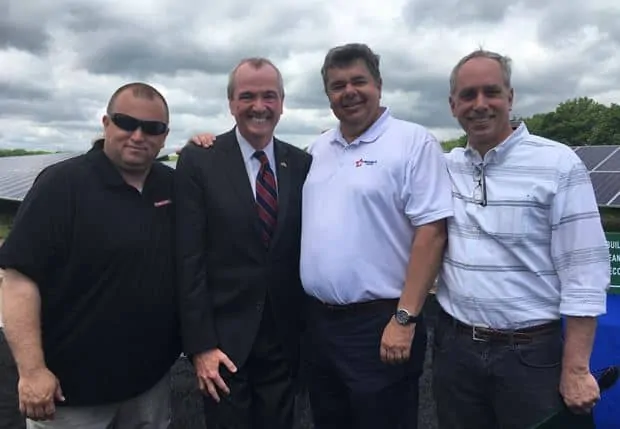

On September 15, Governor Pritzker signed Senate Bill 2408, forming the Illinois Energy Transition Act. The Act advances renewable energy goals and the path to carbon-free electricity generation by 2045. To say this bill will impact the Illinois electrical utility landscape is an understatement.
Illinois is a top energy producer and consumer in the upper Midwest. The Act requires displacement of more than 6,000 MWh provided from coal and natural gas. One average MWh is enough to power 796 homes for a year in the U.S.
Energy efficiencies and implementing alternative energy resources will be an increasingly important strategy to mitigate the cost impacts from this Act to all users: residential, commercial, industrial, and municipal.
SCS supports clients with the decommissioning and legacy management of coal-fired facilities and renewable energy development. Our environmental team in Illinois includes local experts, Scott Knoepke and Richard Southorn who support the management of coal-fired facilities with Coal Combustion Residuals (CCR) and assist utilities transitioning to renewable natural gas installments and solar energy sources. For coal-fired facilities with CCR impoundments, SCS’s Illinois Office provides design, closure, construction quality assurance, and site stewardship (e.g., long-term maintenance, groundwater monitoring, and reporting).
SCS uses a specialized team for solar implementation on landfills and Brownfields. Knoepke and Southorn are supported by SCS National Experts in the region to assess and implement Solar Energy on Landfills & Brownfields.
The Act defines that landfill gas produced in Illinois as a renewable energy resource. SCS Engineers has one of the longest and most successful Biogas practices in the United States. SCS designs, constructs, and operates more Biogas, Anaerobic Digestion, Renewable Natural Gas, Ag Digester systems than any other engineering firm in the nation. Our clients attribute our quality and high production rates to our practice specializing in waste gas utilization, combined with our expertise in solid waste management and compliance.
Have you considered a landfill for your next utility-scale solar power development project? Increasing renewable energy standards, along with decreasing land availability, are making closed landfills an attractive option for utility companies that want to develop clean energy projects. But how do you know if a landfill is suitable for solar development?
Consider these factors when evaluating a landfill’s potential to support utility-scale solar power projects:
Waste Stability
A ground surface that settles differentially is not suitable for a solar project, and typical municipal solid waste (MSW) landfills can see significant settlement as waste degrades, especially right after closure. Older landfills typically have less settlement, making them a better choice for a solar installation. Industrial waste or coal combustion residuals (CCR) landfills may not be as prone to settlement issues as MSW landfills and can be more suitable for solar installation immediately after closure.
Landfill Cap
Landfill caps are designed to keep the waste in and liquids out, and typical caps are not designed to account for the solar panels, electrical conduits, and foundations associated with a solar power project. But with a few modifications to the solar design, the typical landfill cap can accommodate the infrastructure of a solar power project. You can replace a traditional post-driven foundation with an at-grade ballast foundation and run electrical conduits underground within the soil zone above the landfill’s geomembrane liner, or at-grade.
Slopes
Landfills are typically closed with around 4:1 (25%) final slopes. However, some landfill owners are designing their final cap grades with alternative end uses in mind, with flatter slopes that will facilitate future development. These proactive landfill owners can help you maximize the number of panels and subsequently the revenue stream from your solar power project.
Interconnection
Like all power generation projects, you need a suitable interconnection point to connect the generated power to the electrical grid. CCR landfills are often positioned near existing power plants, and therefore near the infrastructure necessary for a suitable interconnection point. MSW or industrial landfills may be located in rural areas where interconnection is more challenging.
Regulatory Requirements
State and local regulators may still be catching up to the idea of putting solar power projects on landfills. The projects bring together a unique mix of solid waste, zoning, electrical, and other regulatory requirements and approvals. Be aware of the regulatory requirements in your jurisdiction and, if in doubt, reach out to your local regulator.
More and more landfills are being developed with solar power projects in mind, and you may be increasingly looking at alternative spaces for your next project. Will your next solar development be on a landfill? Contact SCS Engineers to evaluate a landfill’s solar feasibility today. Find a professional near you, or send us an email at .
In 2016 the 2.3 MW Rock River solar project near Beloit became the largest solar farm in Wisconsin. Do you need help evaluating a landfill for your next utility-scale solar power project? Contact Eric Nelson, SCS’s Utility National Expert.
Recently, Mike Marks and Eric Peterson of SCS Engineers attended a ceremony at a closed BFI site, the South Brunswick Landfill. The landfill features solar panels to create renewable energy as part of normal operations. The renewable energy resource will run side by side with the leachate collection, cap maintenance, and landfill gas monitoring operations.
With the solar project nearly complete at the site the Governor of New Jersey decided it would be the perfect place to sign a major piece of green energy legislation. We agree!
Governor Murphy signed the Renewable Energy bill, which helps improve and expand New Jersey’s renewable energy programs; signed legislation establishing a Zero Emissions Certificate (ZEC) program to maintain New Jersey’s nuclear energy supply; and signed an executive order directing the development of an updated Energy Master Plan (EMP) for the state to achieve 100 percent clean energy by 2050.
In attendance were state politicians, union representatives, Republic Services’ Randy Deardorff, and a host of journalists. Thank you Governor, RSI, and our SCS colleagues in New Jersey.

Praise for New Jersey’s Clean Energy Economy advancements.